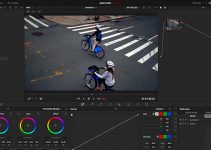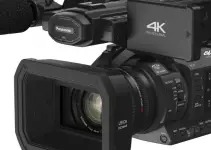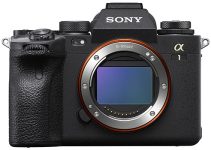The BMPCC 6K and the Fujifilm X-T4 are both S35/APS-C cameras that can shoot fantastic DCI 4K video but were intended for two completely different markets. Despite the fact that one is mainly a stills camera, and the other is a cinema camera in a DSLR body, is it possible to match them up in post?
It seems like we’re always pitting our cameras up against one another to see who is the best, doesn’t it? Sometimes it is to determine a winner, but more often than not it’s a test to see if these two cameras can work together as a pair on the same shoot. With so many cameras offering completely different features, it is nearly impossible to have just one that can do everything.
Let’s have a look at this quick comparison by Matteo Bertoli to see if the BMPCC 6K and X-T4 can work together or if this match will end in bloodshed.
I’d like to start by giving a shout out to all of the people who help us make these comparison videos possible, the subjects. All of the wives, husbands, girlfriends, and boyfriends who put up with us nerds shoving cameras in your faces so we can endlessly peep pixels and geek out over features.
You thought you were just headed to the park, or that you’d just relax on the balcony at sunset but your companion had ulterior motives.
For detailed information about the features in the Fujifilm X-T4 read our previous launch article here , and check out all of our coverage of the Blackmagic Design BMPCC 6K here.
Fujifilm X-T4 Key Features:
- Max Video Resolution: DCI 4K (4096 x 2160) 23.976-59.94p, H.265 10-Bit
- 26.1MP APS-C X-Trans BSI CMOS 4 Sensor
- X-Processor 4 Image Processor
- 5-Axis In-Body Image Stabilization
- DCI/UHD 4K at 60 fps, Full HD at 240 fps
- Price: $1,699.00
Blackmagic Design BMPCC 6K Key Features:
- Max Video Resolution: 6K (6144 x 3456), BRAW 12-Bit
- Active Canon EF/EF-S Mount
- Super 35-Sized HDR Sensor
- Dual Native 400 & 3200 ISO to 25,600
- Price: $1,995.00
The Fujifilm X-T4 and the BMPCC 6K look similar physically but they were designed to meet two completely different needs. Although it does have the ability to take still images, the BMPCC 6K camera was primarily designed to be a DSLR replacement for video shooters who wanted a camera with higher codecs in the same form factor. Whereas, the X-T4 is a stills camera with all of the features we’ve come to expect in a mirrorless body but with the addition of a fantastic 10-Bit internal codec.
Both were designed to meet similar goals but are traveling on parallel paths. The BMPCC 6K caters to filmmakers who want quality, and the X-T4 gears itself to photographer, vloggers and content creators who want the most out of an all-in-one. But if these two counterparts should meet in the same place, how easy is it to match them up?
Matteo Bertoli has spent a lot of time developing the Buttery LUTs collection with the intent of quickly matching multiple cameras that you might find on a modern film shoot.
The Buttery LUTs collection is currently available for:
- Panasonic GH5/GH5s/S1/S1H
- Blackmagic Ursa Mini Pro G1/G2/BMPCC4K/6K/Original Pocket
- Fujifilm XT3/XT4
- RED IPP2
- Arri Alexa
- Canon EOS R
- DJI Mavic Pro 2/Phantom 4 Pro/X7
- Kinefinity Terra 4K/Mavo 6K/LF
- Sony Alpha Serie (SLog2/SGamut3Cine)
- FS5/FS7 – (SLog2/SLog3/SGamut3Cine)
The Buttery LUT package was inspired by the industry-standard ARRI – Rec709 look and does a pretty terrific job of matching cameras together. Let’s take a look at how well Matteo was able to match the X-T4 and the BMPCC 6K.
For these examples, the BMPCC 6K was filming in 6K BRAW and the X-T4 was filming in F-LOG in 10bit H.265 ALL-I.
Notwithstanding the obvious disadvantage of having it’s compressed codec pitted up against another camera’s raw footage, the X-T4 did a fantastic job.
The most noticeable difference between the two cameras is the increased dynamic range from the Pocket 6k. The smoother highlight roll-off from the BMPCC 6K is something that just can’t be emulated in a LUT when dealing with compressed footage.
I also notice a very subtle green shift in the highlights of the X-T4 but that could have a lot to do with the compression codec of the camera as well.
Overall, Matteo was able to do a very impressive job in matching these two fantastic cameras. I could definitely see using the X-T4 as a B camera to the BMPCC 6K using the BUTTERY LUT collection.
Head over to ButteryFilms.com and check out Matteo Bertoli’s LUT collection and see how it can help you match your cameras in post.
If you’re using DaVinci Resolve to handle final color, consider first using the Color Match feature before applying your LUTs too.
The Color Match feature works by identifying the color palette of an X-Rite Color Chart slate that you film on location when you change lenses, or adjust settings/lighting. This will accurately identify and adjust the 20 colors on the chart, in theory matching your cameras almost perfectly before you start coloring, making changes, or adding effects.
How do you think the Fujifilm X-T4 matches up to the BMPCC 6K? Have you ever had two cameras that just wouldn’t match up in post? What did you do to try and make things work?
[source: Matteo Bertoli]
Order Links:
Blackmagic Design Pocket Cinema Camera 6K (B&H, Amazon)
FUJIFILM X-T4 Mirrorless Digital Camera (B&H, Amazon)
Disclaimer: As an Amazon Associate partner and participant in B&H and Adorama Affiliate programmes, we earn a small comission from each purchase made through the affiliate links listed above at no additional cost to you.




